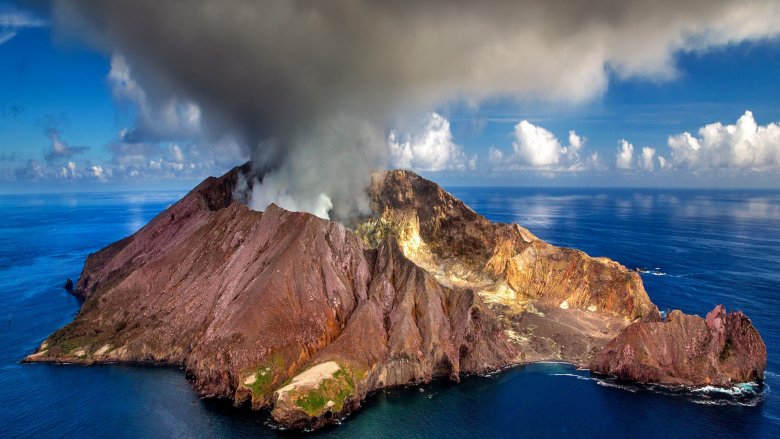A volcano is an opening in the earth’s surface from which molten rock, ash, and gas can escape. These dangerous eruptions can occur anywhere on earth’s surface, from the surface of solid land to underwater. Most people think of huge, red, smoking mountains billowing lava and ash high above the clouds when considering volcanoes. However, volcanoes are found all over the world, and while most are quite harmless, some can wreak havoc on life and property.
Volcanoes are certainly one of the most devastating natural forces the Earth has to offer. The destructive power of volcanic eruptions can be seen around the world, and these volcanoes are ranked by danger level. From frightening to deadly, we will find out which volcanoes are the most dangerous in the world, ranked by danger.
As powerful as volcanoes can be, they do not often cause as much damage as earthquakes, tsunamis, or hurricanes. However, volcanoes can wreak havoc when they erupt, creating dangerous clouds of ash that travel near lightspeed, killing people in their path. Even after a volcano has erupted, harmful gas and ash can linger in the air, prompting people to source things like a half face respirator and eye protection in order to help them move safely through the surrounding area.
The Richter scale measures earthquakes, but the volcano scale measures volcanic eruptions. The Richter scale is based on dwell time or seismic intensity, whereas the volcano scale is based on eruptive magnitude. These two scales show different information about the volcano, but they are both used worldwide to determine when volcanic activity is imminent. Here are the three most dangerous volcanoes in the world.
Mt. Vesuvius
Mt. Vesuvius is one of the World’s most active volcanoes. Due to its close proximity to Rome, the eruption has often resulted in significant loss of life. The volcano erupted for the first time in 79 AD, killing thousands. Over the last 2,000 years, the Vesuvius volcano has caused the death of more than 60,000 people. Mt. Vesuvius is the most active volcano in Italy, with 39 eruptions in the last 1,200 years. The volcano is 8,000 feet above sea level and 8.2 miles in diameter.
The eruption of Mt. Vesuvius in 79 AD is considered by many to be the world’s first recorded natural disaster. The eruption resulted in the death of 25,000 people, and, according to legend, it produced the “Pompeii Sunset,” an eerie, red-swirling sky that appeared after the cataclysmic event. Since then, eruptions of both Mount Vesuvius and Mt. Etna have prompted the evacuation of entire towns, with deadly consequences.
Mt. Rainier
Mt. Rainier National Park is one of the most beautiful areas of the Pacific Northwest, with its evergreen forests, glaciers, and snow-capped peaks. But contrary to the myth of the mountains being a place of peace and tranquility, Mt. Rainier is one of the most dangerous volcanoes in the world, with a history of eruptions and deadly landslides. There is no permanent human habitation on the mountain, however, any eruption poses a serious threat to the surrounding population.
According to the National Park Service, Mount Rainier is one of the deadliest volcanoes in the world, even though it has not produced a significant eruption in the past 500 years. This is due in part to its great height, but also because of frequent quakes, active hydrothermal system and extensive glacier mantle. “Crater Lake,” the glacier-carved valley in the volcano’s massive south face, is the most famous destination in the park. “The Paradise Ski Area,” on the flanks of the volcano’s massive west face, is the park’s ski area. The volcano’s north face rises above 11,200 feet and is popular with hikers, climbers, and backcountry skiers.
Taal Volcano
The Taal Volcano, one of the seven volcanoes that makes up the Taal Volcano Massif, is the fifth highest mountain in the Philippines. The Taal Volcano is located in the province of Batangas, in Luzon. It is also known as the “heart” of the volcano system. The volcano’s active crater is 5 km wide with a base diameter of 3.5 km and erupted in 1814. The volcano’s last major eruption was in 1960, which killed 200 people, injured 500, and destroyed 1,500 homes.
Taal Volcano, which lies less than an hour’s drive from the capital city of Manila is one of the country’s most active volcanoes. According to local reports, Taal is also one of the world’s most dangerous volcanoes. Its recent eruptions in 2001, 2010, and 2014 forced hundreds of thousands of people to flee their homes, and thousands of homes and buildings were damaged or destroyed.



